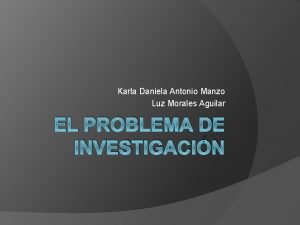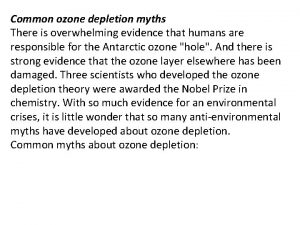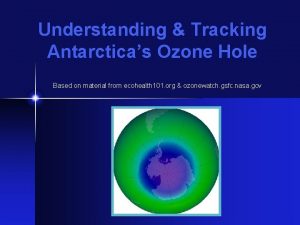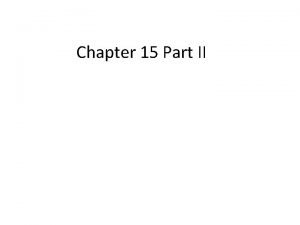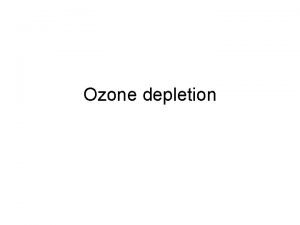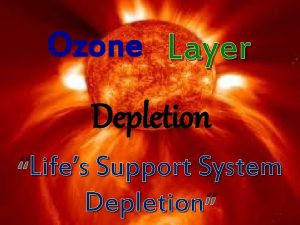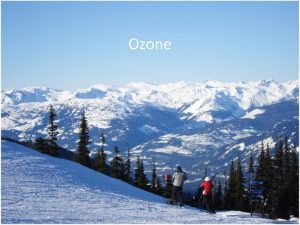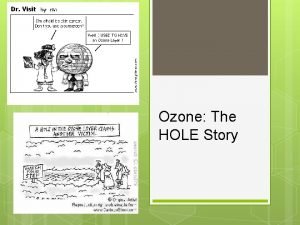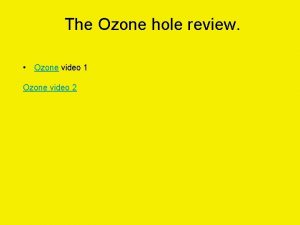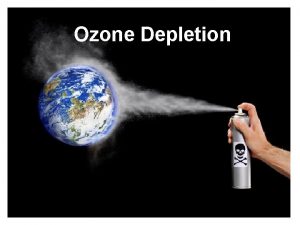Ozone layer hole Karla Paulina Garza Gonzlez Daniela





- Slides: 5

Ozone layer hole Karla Paulina Garza González Daniela Plata Amaro Esli Febe Regalado Guzmán Bella Selene Rivera Tovar Team 3

What is the ozone hole? The ozone hole is not technically a “hole” where no ozone is present, is actually a region of exceptionally depleted ozone in the stratosphere over the Antarctic that happens at the beginning of Southern Hemisphere spring. Satellite instruments provide us with daily images of ozone over the Antarctic region.

atmosphere, Many they are so people stable the have CFCs that they persist heard that for years, the ozone even hole is decades. caused by This long lifetime chemicals allows some called of the CFCs, to eventually short for reach the In the stratosphere, ultraviolet light breaks chlorofluor stratosphere. the bond holding chlorine atoms (Cl) to ocarbons. the CFC molecule, and this is what it Chlorofluorocarbons and ozone

Polar stratospheric clouds (PSCs) and ozone In the long months of polar darkness over Antarctica in the winter, atmospheric conditions are unusual. An endlessly circling whirlpool of stratospheric winds called the polar vortex isolates the air in the center. Because it is completely dark, the air in the vortex gets so cold that clouds form. Chemical reactions take place that could not take place anywhere else in the atmosphere. These unusual reactions can occur only on the surface of polar stratospheric cloud particles, which may be water, ice, or nitric acid, depending on the

When we talk about the ozone hole we refer to Antarctica because that's where ozone reduction is most noticeable and greatest during a particular time of the year, when it's As air from the surrounding spring latitudes mixes into the polar region, the ozone-destroying The hole in the ozone layer forms of chlorine disperse. continues to exist, although in the scientific community there is optimism that its size will be reduced. In these cold clouds the chlorine and bromine chemistry that destroys ozone is Extreme cold and large amounts of light help produce what are called polar stratospheric clouds.
